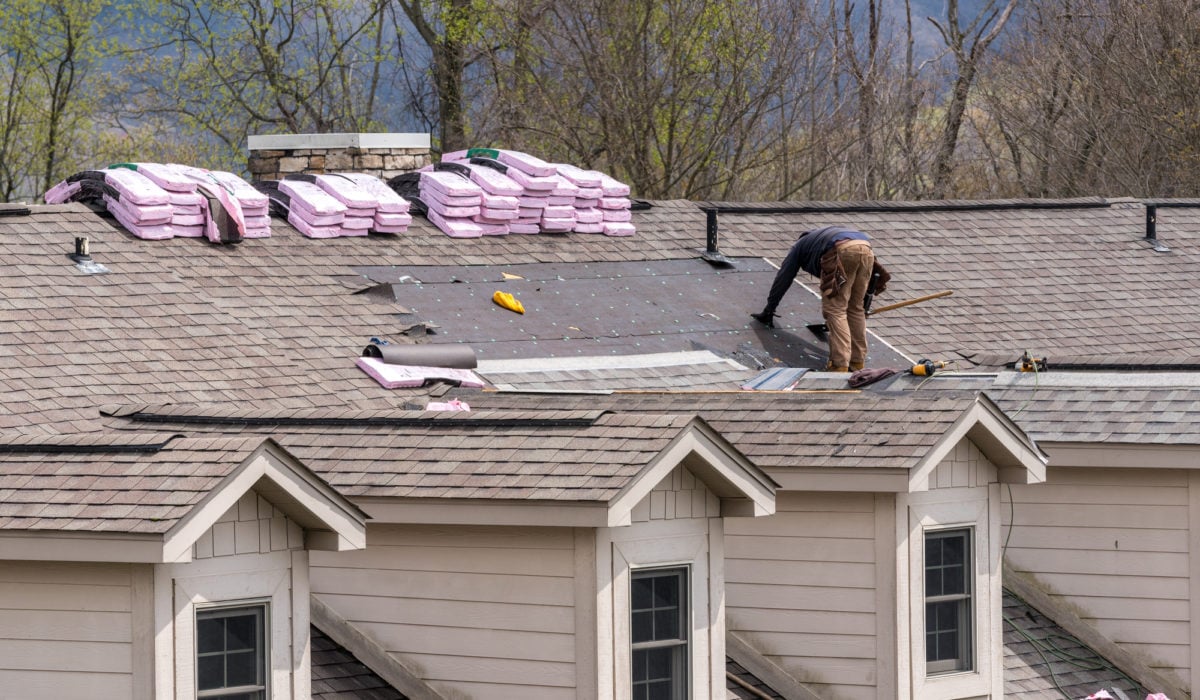- 0 Comment
The Process of Installing a Roof
When it comes to home improvement, few projects are as crucial as installing a roof. Your roof not only protects your home from the elements but also plays a significant role in its overall appearance and energy efficiency. Whether you’re building a new home or replacing an aging roof, understanding the process of installing a roof can help you make informed decisions and ensure a successful project.
1. Roof Inspection and Planning:
The process of installing a roof begins with a thorough roof inspection. This step is essential to assess the current condition of your roof and determine whether a complete replacement or repairs are needed. During the inspection, roofing professionals will look for signs of damage, leaks, and structural issues. They’ll also consider factors like the roof’s pitch, materials, and your local climate to determine the best roofing system for your home.
2. Material Selection:
Choosing the right roofing material is a critical decision in the roof installation process. Common roofing materials include asphalt shingles, metal roofing, clay or concrete tiles, and wood shakes. Each material has its own advantages and disadvantages, so it’s essential to consider factors like cost, durability, aesthetics, and maintenance requirements. Your choice of material will significantly impact the overall look and longevity of your roof.
3. Removing the Old Roof:
If your existing roof needs to be replaced, the next step is to remove the old roofing material. This process involves stripping away the shingles, underlayment, and any damaged decking or sheathing. It’s a labor-intensive and messy job, but it’s necessary to ensure a clean and stable surface for the new roof.
4. Roof Deck Preparation:
Once the old roofing material is removed, any damaged or deteriorated roof decking must be repaired or replaced. The roof decking is the layer of material that provides a stable base for the roof. Properly preparing the deck is crucial for the structural integrity of the new roof.
5. Underlayment Installation:
After the roof deck is in good condition, the next step is to install an underlayment. The underlayment serves as a moisture barrier and provides an extra layer of protection against leaks. It’s typically made of asphalt-saturated felt or synthetic materials. The underlayment is crucial for preventing water infiltration and ensuring the longevity of the roofing system.
6. Roofing Material Installation:
With the underlayment in place, it’s time to install the chosen roofing material. The installation process varies depending on the material but generally involves carefully aligning and securing each piece. For asphalt shingles, this includes nailing them in place and overlapping each row to create a watertight seal. Metal roofing may require screws or clips for attachment, while clay or concrete tiles are typically interlocked.
7. Flashing and Ventilation:
Proper flashing and ventilation are essential components of a well-installed roof. Flashing is used to seal joints, transitions, and areas where water could penetrate, such as around chimneys, vents, and skylights. Adequate ventilation helps regulate temperature and moisture in the attic, preventing problems like mold growth and ice dams.
8. Quality Inspection:
After the roofing material, flashing, and ventilation are in place, a thorough quality inspection is conducted. Roofing professionals check for any installation errors, ensure all components are properly sealed, and assess the roof’s overall integrity. This step is crucial for identifying and addressing any issues before they become major problems.
9. Clean-Up and Final Touches:
Once the roof is deemed sound and secure, the final touches are applied. This includes cleaning up any debris from the installation process and ensuring that the surrounding area is left in good condition. Proper disposal of old roofing materials is also a part of this phase.
10. Enjoying Your New Roof:
The process of installing a roof can be a significant undertaking, but it’s well worth the effort. A well-installed roof not only provides protection but also enhances the aesthetics and value of your home. With the right materials, professional installation, and proper maintenance, your new roof can last for many years, giving you peace of mind and comfort.
In conclusion, the process of installing a roof is a multi-step journey that begins with inspection and planning and ends with enjoying the benefits of a secure and durable roof over your head. It’s essential to work with experienced roofing professionals and make informed decisions about materials to ensure a successful roofing project that stands the test of time.

